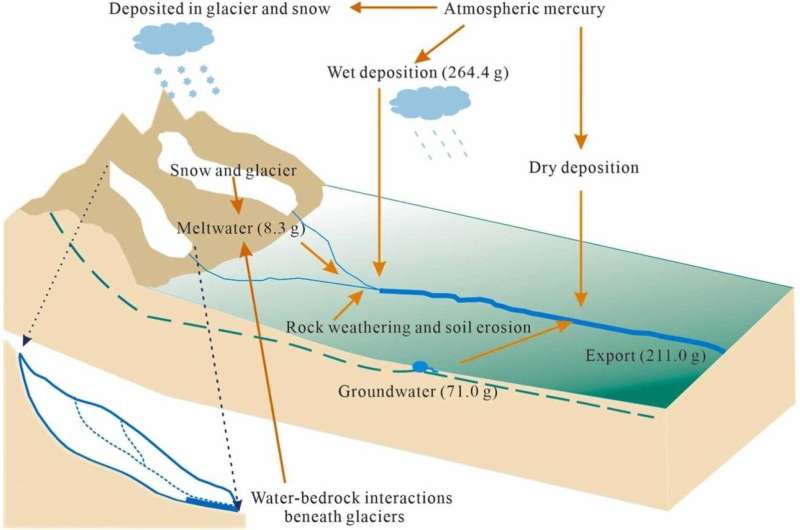This article has been reviewed according to Science X's editorial process and policies. Editors have highlighted the following attributes while ensuring the content's credibility:
fact-checked
peer-reviewed publication
trusted source
proofread
Glacier melting impact on Hg cycle in aquatic ecosystems of Qinghai-Tibet Plateau cannot be ignored: Study

Mercury (Hg), a highly toxic contaminant that persists globally, can be stored in the cryosphere and released into aquatic ecosystems as glaciers melt, posing potential risks to human health.
A research team led by Prof. Kang Shichang from the Northwest Institute of Eco-Environment and Resources of the Chinese Academy of Sciences conducted daily scale observation for a year in the Mingyong catchment of Meili Snow Mountain to reveal the temporal variation and controlling factors of total Hg concentration in glacial runoff.
The study, titled "Mercury export from a glacier-fed river of Mt. Meili, southeastern Tibetan Plateau," is published in the Journal of Hazardous Materials.
Researchers quantified the input flux of Hg and assessed the output flux of total Hg concentration in the glacial runoff of the Mingyong catchment and the entire Qinghai-Tibet Plateau.
Correlation analyses indicated that the controlling factors for Hg concentrations in glacierized rivers are influenced by various environmental and hydrological processes, making them complex and multifaceted.
The study found that total Hg concentration in glacial runoff during the monsoon period is higher than in the non-monsoon period.
The Mingyong catchment showed an Hg input flux of 343.8 g/year, with meltwater, precipitation, and groundwater contributing 2.4%, 76.9%, and 20.7% respectively.
Glaciers in the catchment can affect the temporal pattern of Hg concentrations in glacier runoff in two ways. One is releasing historically stored Hg during the ablation period of Mingyong Glacier and the other is through rock-water interactions beneath the glacier, which serves as a significant source of Hg.
The result showed that Hg export flux in the Mingyong River is 211.0 g/year, indicating that the basin acts as a mercury sink.
Additionally, the researchers estimated that the annual export of Hg through glacier runoff in the Qinghai-Tibet Plateau is 947.7 kg/year.
This study confirms that the impact of glacier melting on the Hg cycle within aquatic ecosystems in the Qinghai-Tibet Plateau cannot be ignored.
More information: Tao Pu et al, Mercury export from a glacier-fed river of Mt. Meili, southeastern Tibetan Plateau, Journal of Hazardous Materials (2024). DOI: 10.1016/j.jhazmat.2024.135306
Journal information: Journal of Hazardous Materials
Provided by Chinese Academy of Sciences



















